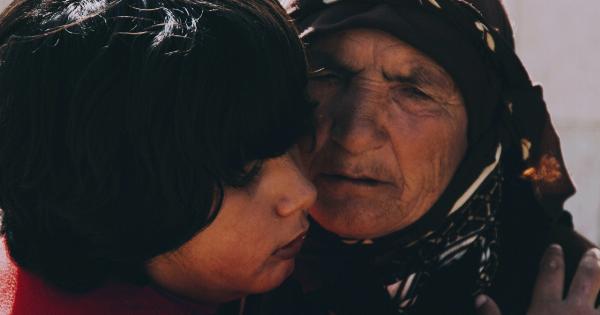In recent years, an alarming trend has emerged, leaving many perplexed and worried—thousands of children under the age of 10 are experiencing symptoms of depression.
What was once considered an adult mental health issue has infiltrated the young minds of our society, raising concerns about the possible factors contributing to this distressing phenomenon. The aim of this article is to delve into the complexities of childhood depression, shed light on potential causes, and explore possible solutions to this pressing problem.
What is Childhood Depression?
Depression, often characterized by persistent sadness, feelings of worthlessness, and a loss of interest or pleasure in activities, is a mental health disorder that affects millions of people worldwide.
While it has long been associated with adulthood, the prevalence of depression in children is becoming increasingly apparent. Childhood depression, also known as pediatric depression, refers to the development of these debilitating symptoms in children under the age of 10.
It is a serious condition that requires immediate attention and intervention to prevent long-term consequences.
The Rise of Childhood Depression
The prominence of childhood depression has seen a concerning uptick in recent years. According to the World Health Organization (WHO), approximately 3% of children aged 6-12 and 4.4% of adolescents aged 13-17 experience a depressive episode each year.
This translates to a staggering number of young individuals struggling with their mental health on a daily basis. The reasons behind this rise are multifaceted and interconnected, making it crucial to explore each factor individually.
1. Increased Pressure and Academic Demands
In today’s competitive society, children are under immense pressure to excel academically. The mounting expectations placed on them, coupled with the intense competition among peers, can lead to significant stress and anxiety.
These pressures can manifest as symptoms of depression in susceptible individuals, highlighting the need for a more balanced and holistic approach to education.
2. Changing Family Dynamics and Social Influences
The dynamics within the traditional family structure have undergone considerable changes in recent decades. Economic pressures often result in both parents working outside the home, leaving children with less parental support and guidance.
Additionally, the advent of technology and social media has brought about its own set of challenges. Children are now exposed to a multitude of influences and comparisons that can negatively impact their self-esteem and overall mental well-being.
3. Genetic and Biological Vulnerabilities
The role of genetics and biology in the development of depression cannot be overlooked. Individuals with a family history of depression are more likely to experience the disorder themselves.
Additionally, imbalances in brain chemicals, specifically serotonin and dopamine, have been linked to depression. Understanding these biological factors is crucial in developing effective treatment and prevention strategies for childhood depression.
4. Traumatic Life Events
Children who experience traumatic life events such as the loss of a loved one, physical or emotional abuse, or instability within the home are at a higher risk of developing depression.
The impact of such events can be deeply ingrained in their young minds, leading to long-term psychological distress. Recognizing and addressing these traumas is vital in supporting the mental well-being of children.
5. Lack of Awareness and Stigma
Despite the increasing prevalence of childhood depression, there remains a significant lack of awareness and understanding surrounding the condition.
Many parents and caregivers may misinterpret the symptoms as normal childhood behaviors or passing phases. Moreover, the enduring stigma associated with mental health issues often prevents affected children from seeking the necessary help and support they require.
The Consequences of Childhood Depression
Childhood depression can have severe consequences on the overall well-being and future trajectory of affected individuals. If left untreated, it can lead to a myriad of long-lasting problems, including:.
1. Impaired Academic Performance
Depression can significantly impair cognitive function, affecting a child’s ability to concentrate, retain information, and perform academically.
This can undermine their educational progress, perpetuating a cycle of frustration and low self-esteem.
2. Social Isolation and Relationship Difficulties
Children grappling with depression often experience social withdrawal and struggle to build meaningful relationships.
Their lack of enthusiasm and emotional distance can make it challenging for them to establish social connections, which are crucial for healthy development.
3. Increased Risk of Substance Abuse
Depression during childhood can increase the likelihood of engaging in substance abuse as individuals seek temporary relief or an escape from their emotional pain. This risky behavior can lead to a cascade of negative consequences in their lives.
4. Higher Vulnerability to Mental Health Disorders in Adulthood
Children who experience depression are at a higher risk of developing other mental health disorders in adulthood.
The long-term repercussions of untreated childhood depression extend far beyond the immediate distress and highlight the urgency for early intervention and treatment.
Addressing Childhood Depression: A Call to Action
To tackle the rising prevalence of childhood depression, a multi-faceted approach involving various stakeholders is necessary:.
1. Education and Awareness Campaigns
Parents, teachers, and society at large must be educated about the signs and symptoms of childhood depression. This increased awareness can facilitate early identification and intervention, promoting better mental health outcomes for affected children.
2. Improved Support Systems
Providing stronger support systems within schools and communities is crucial.
Trained counselors and mental health professionals should be more readily available to help children navigate their emotional difficulties and provide guidance to parents and caregivers.
3. Encouraging Open Dialogue
Creating safe spaces for children to express their feelings openly and without judgment can help reduce the stigma surrounding mental health.
Dialogues centered on emotions and concerns should be normalized, encouraging children to seek support when needed.
4. Enhancing Parental Involvement
Parents play a vital role in their child’s mental well-being.
Encouraging open lines of communication, actively participating in their children’s lives, and providing a nurturing environment can significantly mitigate the risk of depression development.
5. Therapeutic Interventions and Counseling
Evidence-based therapeutic interventions, such as cognitive-behavioral therapy (CBT), have shown promise in treating childhood depression. Accessible and affordable counseling services should be made available to all children in need.
The Road Ahead: Combating Childhood Depression Together
Childhood depression is a multifaceted issue, deeply intertwined with societal, familial, and individual factors.
Recognizing the rising prevalence of this concerning condition and taking collective action is paramount in safeguarding the mental well-being of future generations.
By addressing the root causes, enhancing support systems, and fostering open dialogue, we can work towards providing children with the emotional tools necessary to navigate life’s challenges resiliently and without succumbing to the clutches of depression.


























